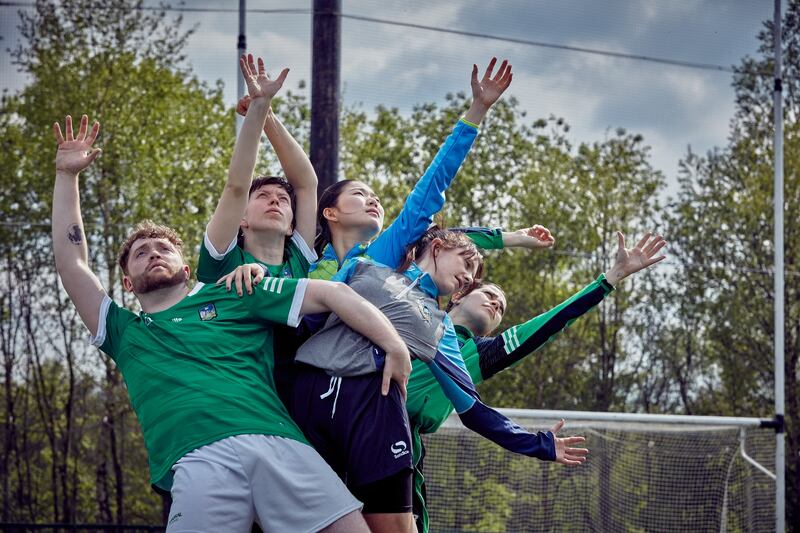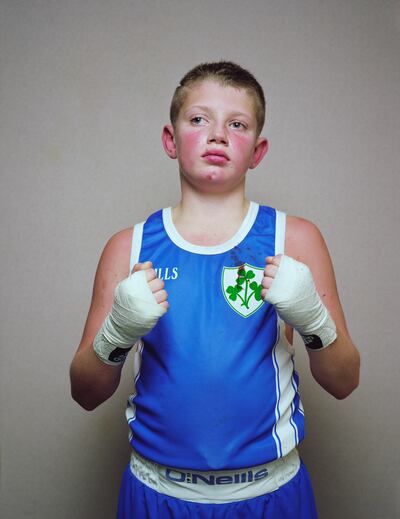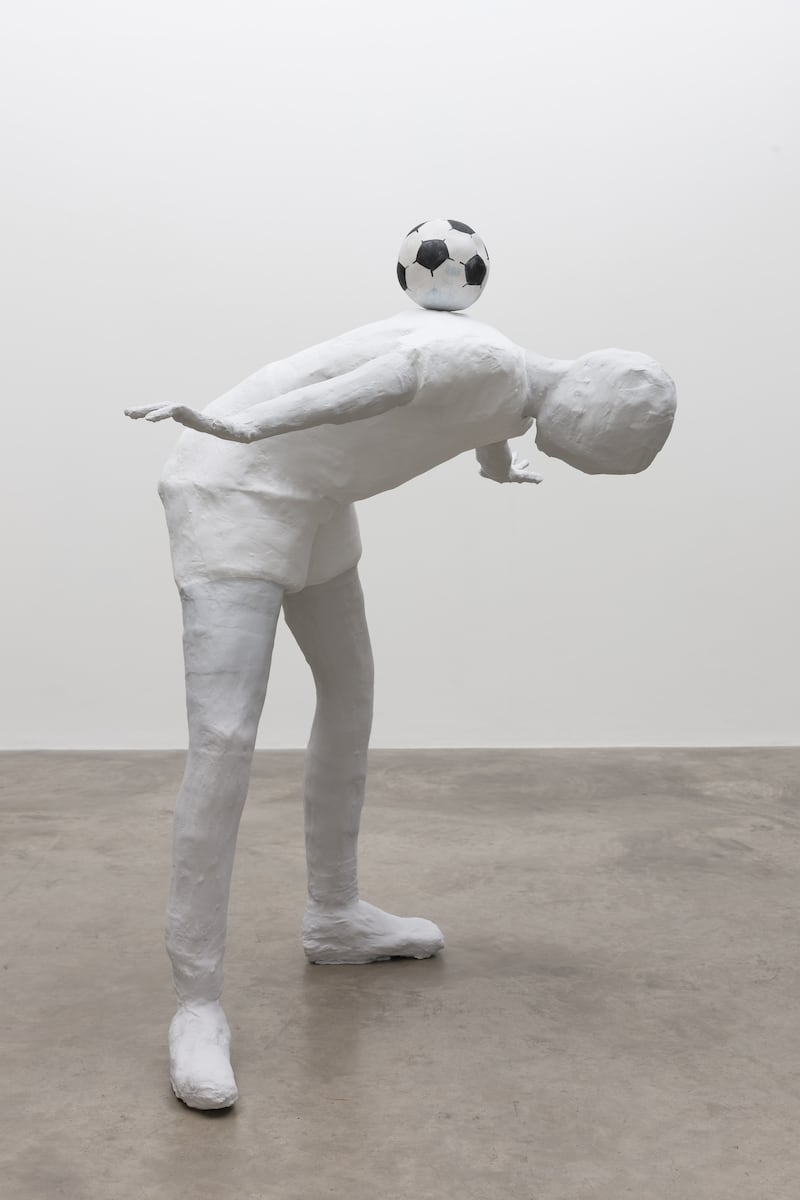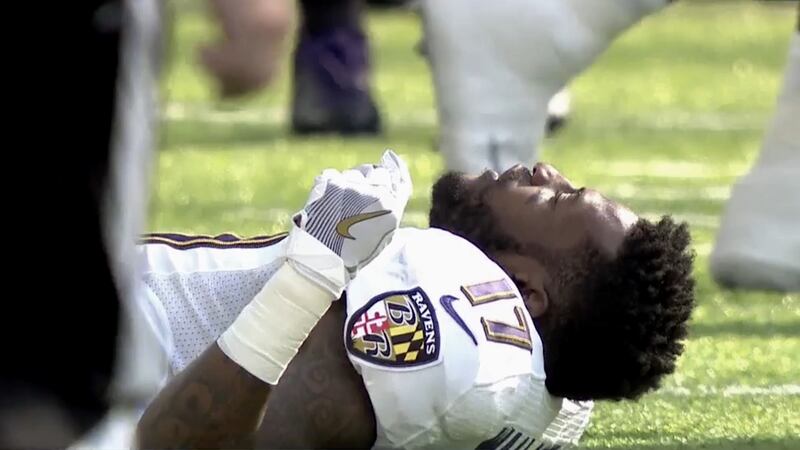Few moments in the history of sport left such a deep impression on popular culture as the fight between Muhammad Ali and George Foreman in Kinshasa. It took place on October 30th, 1974. Sixty-thousand people attended and an estimated audience of one billion watched on television screens and on live transmissions in cinema. The fight took place at 3am to suit American viewing times. Even as the boxers met in the ring, folklore and imaginative reinterpretation of the event had begun. By then, both fighters held vital roles in popular culture.
Among those sitting around ringside were the writer and fight enthusiast Norman Mailer and Paris Review editor George Plimpton. Rolling Stone sent Hunter Thompson to write their definitive piece: as illustrator Ralph Steadman would ruefully recall, Thompson promptly scalped their tickets and spent the night of the fight floating naked on an inflatable in the hotel pool, a sight that did not draw much of an audience. The scale and brutal majesty of the encounter seeped into the foundations of the decade and has since featured in literature, music and film. There are few more moving Oscar moments than that of Foreman assisting his former adversary as they walked across the stage to collect the statue for When We Were Kings, the 1996 documentary.
On social media there is such a constant nature of comparing and one-upping. We have this medium which is fascinating and provides so much information but socially can be devastating in its falseness
— Photographer Jona Frank
Ali and Foreman’s immortal evening is part of the upcoming exhibition The Art of Sport at the Kilkenny Arts festival. Or, more accurately, of artist Paul Pfeiffer’s video installation, The Long Count (Rumble In the Jungle). The boxers don’t feature at all. More than 20 years have passed since Pfeiffer, a sculptor and visual artist, reimagined the bout by erasing the boxers, leaving only their silhouettes. You can see Foreman and Ali’s spectral outlines as they move through the celebrated feints and punches. So, in the small video installation, the eye is drawn to the crowd. We try to see what they are seeing. It is hypnotic and otherworldly. And when Anna O’Sullivan was planning the exhibition, she knew it was a piece she wanted to show.
“The ghost-like features in the film are so striking,” she says, speaking from her office.
READ MORE
“It’s a feature in a lot of Paul’s work. I came across him in New York first and his take on things has always fascinated me. He is thinking about the awe and worship in the sports arena. Not a lot has been said about the fact that most of the people in the crowd are white. You are looking more at the audience and at their awe at what these athletes are doing in the ring. It highlights this incredible connection people have with sport. And what the athletes put themselves through. And poor old Ali in the latter part of his life paid for all those tough fights.”
O’Sullivan lived in New York for 23 years, working in the art world and steadily becoming more engaged by the lurching fortunes of the New York Knicks basketball team. Eventually she joined the ranks of the club’s long-suffering fans, making the pilgrimage to Madison Square Garden during a period when the team promised so much but always fell short. She noticed that the cross section between art and sport did occur - but rarely, and never as the focus of an exhibition. So, curating an exhibition like this was always an ambition of hers.
“It is not a box-ticking of all sports,” she says of the works on show.
“It is something I have wanted to do for years, prior to Covid. Now, I am hearing that other galleries are starting to do things around the next Olympics. One thing I did seek out which I would have loved to have included was a photo of Katie Taylor. But when I went looking, they were all press photographs, and I couldn’t get the rights. The combination of videos, photographs and prints and a smattering of historical pieces give the sense that sport is a subject in which artists have always had an interest.”

The exhibition she has curated is a visual treat. Among the photographs showing is a selection from Paul Carroll’s 2016 collection Gaelic Fields. The Cork photographer spent several years methodically gathering images from local games all over Ireland. The book is structured to mirror the progress of a game: the first image features action shortly after the ball is thrown in and the closing photographs feature a night-time training session. The images move through the seasons. It was a labour-intensive project, requiring Carroll to travel the breath of the country for obscure games before choosing one image to add to his series. Some of the clubs are famous- including Ballyhale Shamrocks, the pride of Kilkenny hurling. But many others are modest clubs just doing their best to keep the show on the road.
[ Ballyhale Shamrocks dominate selection for club hurling team of the yearOpens in new window ]
“There’s a lot of people doing a lot of work in isolation,” Carroll says.
“Doing their bit to keep the club going. The Ballyhale game was an anomaly. I wasn’t too interested in senior. I was more thinking about people who were just mad passionate about it. I confused many PROs by asking could I come along to photograph a junior football game in Longford, say, on a Wednesday night. They were surprised. Why do you want to come here? I think there was a concern that the team mightn’t be good enough.”
Through the collection is an implied sense of how the club games reflect the changing social patterns of Ireland. During one game, he fell into conversation with a club veteran who told him of the rhythm of these local encounters three decades earlier when, irrespective of the intensity of the match, both teams would usually go to the same pub afterwards. Often, those nights would become long festive sessions. And the players would drive home afterwards.
“A lot of players worked together then too. Now, they just go their separate way after games. So, you can see that kind of atomisation happening. People have moved from the self-destruction of heavy drinking to body shaping and body sculpting and all of that. There is a want of professional standards at that level.”

Boxing features strongly throughout. When photographer Jona Frank found herself in England, accompanying her husband, the cinematographer Patrick Loungway, on set, she contacted two Liverpudlian friends she had met years earlier in New Orleans. They showed her around Ellesmere Port, including a visit to the local boxing club.
“And the minute I walked in and saw so many red and yellow walls, I knew I wanted to make portraits- and 4x5 portraits,” Frank recalls.
“The pictures are of the boys when they come out of the ring right after a match. It’s a moment when they are not performative or all that engaged with the camera because they are physically exhausted. And as I was watching their matches, I was amazed by how different they looked when they were warming up for the match and boxing to how they looked after their fight was over. And the matches could be short, just eight minutes, but in that period, they were transformed. And watching them do that, really giving everything to that moment, I found fascinating. And it led me to do that series.”
The portraits came together over the years as Frank made periodic visits to Liverpool and eventually became Modern Kids 2012-2015. Included are photographs of young boxers from Crumlin Boxing Club, who happened to visit the Ellesmere club for a tournament when Frank was visiting.
Bruce Weber launched the collection. “How did you do this?” he asked her. Meaning: how did a photographer from the American west coast chronicle an obscure north of England fight club over several years. But also: how did a female photographer gain acceptance in what was a male domain?
“And it was unusual. I don’t know if it was during doing it when I realised that.”
The answer may lie in Frank’s talent for drawing stunningly clean and naturalistic portraits of young people whose stories she has told in still photography. Adolescence interests her- in Cherry Hill: A Childhood Reimagined (2020), she recreated her own childhood and engaged the actress Laura Dern to play the role of her mother. Curiously, it was spending so much time with the young boxers from Ellesmere that prompted Frank to think about her own youth. She had previously portrayed teenage years in still and film, taking an elite school in the heart of the tech community in California as one subject. It was as though the Ellesmere project was a response to what she found in Palo Alto.
“You know, I had never thought about that, but you are looking at something that is in the absolute shadow of the tech industry in an extreme way. And these kids are so pressured. They come from these families that have extreme means- they have money to do anything they want. And some are on this strict this-is-what-you-should-do track. Ellesmere Port, over that three-year period, had so many people employed by Vauxhall Motors. And the company started doing part-time weeks, where hours were cut, and families were incredibly affected. This was not a town of infinite opportunity. So, the boxing club provided a camaraderie that was very necessary. I found that very moving. The older boxers would mentor the younger boxers. But also, it was a place for fathers to be with sons. You would see them talking to their kids while they were working out. So, to go from someplace like watching a soccer game in Palo Alto where the parents were competitive with one another – my kid is better than your kid – I felt there was a lot of rooting for each other in that gym.”

But her subjects do have one thing in common, irrespective of location and circumstance. They are teenagers, with the same doubts and vanities and insecurities. When Frank reflects on her childhood in adolescence in 1970s’ New Jersey, she has no doubt that the business of growing up has become much more complex now.
“And I think that’s because of social media. There is such a constant nature of comparing and one-upping. We have this medium which is fascinating and provides so much information but socially can be devastating in its falseness. And it is a whole different way to gossip in a way that is ugly.” For someone who spends her life persuading people to stand in front of her lens, the overwhelming presence of the selfie must seem disturbing.
[ Jennifer O’Connell: Are selfies a form of self-harm?Opens in new window ]
“Ultimately, I think it’s a need to belong to something and to have self-importance. It is complicated. One of the things that is so strange about the whole selfie world is equity. You can be posting and right after Tom Cruise’s post there can be a post from a boxer from Ellesmere. It’s the strangeness of: aren’t we all the same? Don’t we have this in common? But that is not the case. And it becomes this obsession with presentation that is not healthy.”
The health ramifications of the brutal full-throttle collisions that define American football feature in Josh Begley’s Concussion Protocol. The 5.45-minute film is an eerie and unsettling presentation of the series of tackles and hits in a single NFL season (280 tackles throughout 2017/18) that led to concussion protocols .
Begley, though, begins each frame immediately after the bone-shuddering tackle has taken place. In some instances, the players have lost their helmets and lie of the field with glazed expressions or, in one disturbing sequence, stagger about the field unable to regain their balance. But Begley then plays the tackle in reverse so that the sequence ends when the collision is about to happen. The effect is to completely draw the eye away from the obvious object of interest- the ball. It’s there all right, as the athletes leap to catch it or try to run with it or dive on it. But it is the extreme athleticism and the balletic quality of the mid-air collisions that completely dominate. Removed from the context of the game – the score, the television announcers, the crowd – the strangeness of the activity becomes inescapable.

“If you don’t know American football you are still struck by, well, in some respects the beauty of the sport but the underlying premise is to highlight the injuries that occur,” O’Sullivan says.
“It is kind of washed over. And it is mostly young African-Americans who put themselves through these things. Josh is a kind of political film maker and what he did is so mesmerising. And in the end, you do get the sense that this is something that is problematic in the sport.”
While O’Sullivan was going through the finer details of this exhibition, Kilkenny were preparing for an All-Ireland hurling final and the Ireland women’s soccer team featured in regular news bulletins as their World Cup campaign got under way. Although not an avid sports follower, she would catch the headlines and noticed in more recent years that women’s sports had begun to feature more prominently as part of the narrative.
[ Sports photographers see big picture in magic memoriesOpens in new window ]
“I have been struck by how present sport is in every aspect of life. I have learned stuff by osmosis because I listen to the radio. There is a lot of coverage of it. And in the last couple of years women’s sport has come to have a great presence in the Irish psyche. And that has opened it to a new audience, which is great. And one of the reasons why one might do something like this is to encourage people to come to a gallery that may not normally go. We opened our new space here in 2020 after 43 years in the basement of Kilkenny castle. And now we have a space that’s really in the centre of town, it’s become a hub of the community. And you’re always trying to reach out to diverse audiences. So, when you do a show like this, the hope is that you are drawing in a new audience. And a new audience that that might be curious about sport, but then will get something a lot more out of it when they see the art behind it, that artists can make really intriguing and fascinating and mind-bending things with the way they bring their talent and practice to the whole idea of sport.”
The Art of Sport is at the Butler Gallery in partnership with Kilkenny Arts Festival from August 12th

















